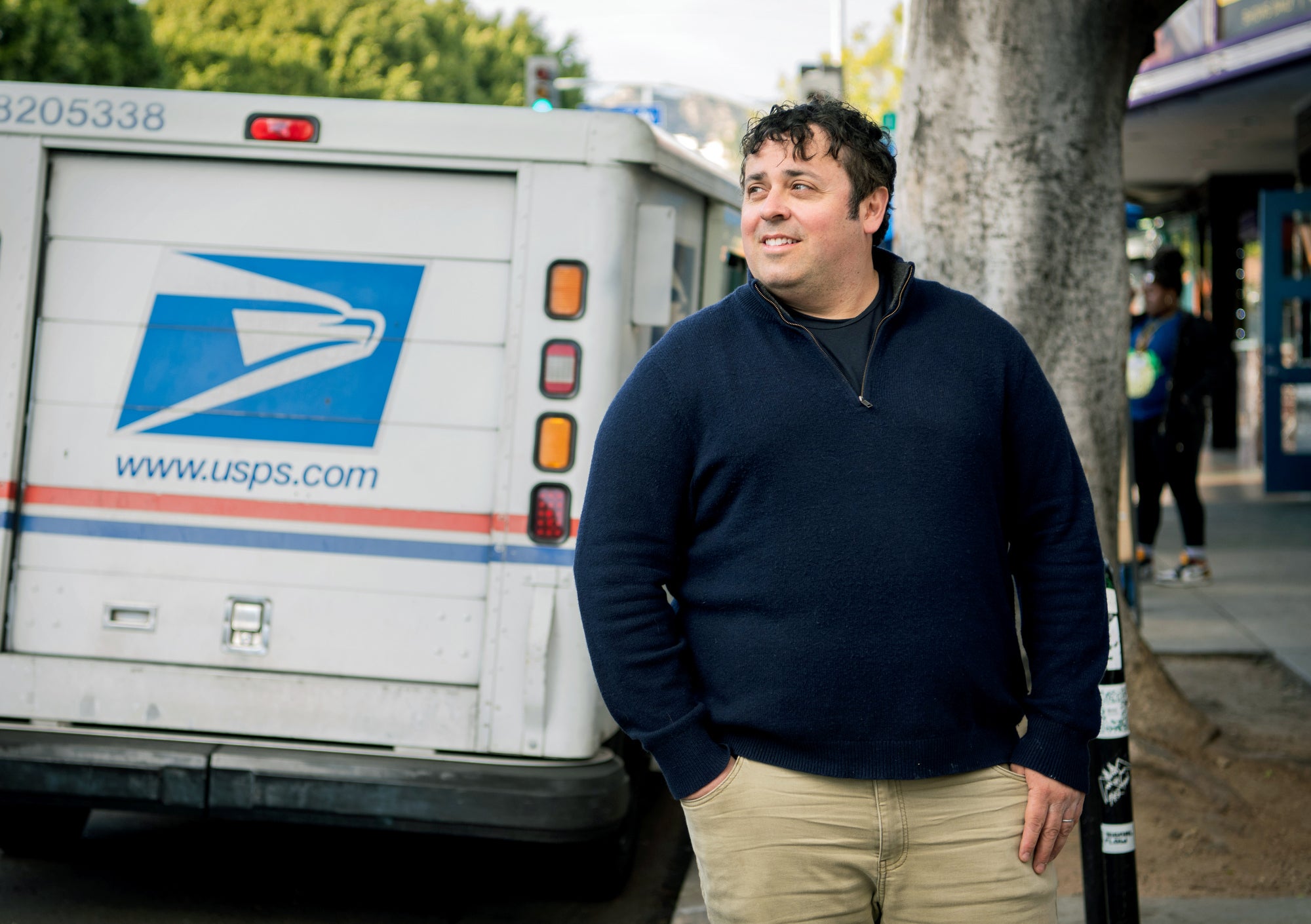Meet the Environmental Attorney Who Wants to Electrify Everything on Wheels
Adrian Martinez says incremental steps to tackle air pollution and climate change aren't enough.

This page was published 2 years ago. Find the latest on Earthjustice’s work.
Starting in 2026, all new USPS postal trucks will be electric. This recent commitment by the U.S. Postal Service (USPS) will deliver clean air benefits to every neighborhood in the country. But getting the government to sign on to electrification took a wave of advocacy and litigation, including a lawsuit from Earthjustice, 100,000-plus public comments from our supporters — AND 30 pounds of postcards from this magazine’s readers calling for electrification.
California office deputy managing attorney Adrian Martinez and the Right to Zero team, who are pushing to electrify everything on wheels, led Earthjustice’s legal strategy in the postal truck fight. In this interview, Martinez talks about the USPS win, how he uses Twitter for good, and why incremental steps to tackling air pollution and climate change simply won’t work.
What strategies worked best in the USPS fight?
The postal service win is a great example of using litigation, advocacy with administrative agencies and legislatures, and communications to paint a picture of what’s possible. People in this space often want to continue the status quo, which means they want our economy addicted to burning fossil fuels. And they have a lot of lawyers. Their response is always, “You can’t do this. You can’t do that.” So oftentimes we are helping our clients and partners say to them, “You’re wrong. This is totally doable.”
The possibility of converting one of the most iconic vehicles in America to electric also just really caught people’s imagination. It’s our opportunity to bring electric vehicles to virtually every neighborhood in the country.
How did people first react to Earthjustice’s zero emissions strategy?
When we first started, we had a lot of insults hurled our way. Some people felt like we were doing our clients and partners a disservice by not working for some interim emission reductions. But I think what these hecklers missed is that our position was informed by our clients and partners. They had been promised everything in terms of “cleaner” but not “clean” technologies. People said these incremental strategies would solve our air pollution problems. But the pollution remained. We recognized that incremental changes were basically a distraction.
The fossil fuel industry of course mocked our zero emissions strategy at first. But then we started to have some eye-opening successes, and then they began to fear us. This was the era when we started to see astroturf groups [which are fake grassroots campaigns] pop up because they realized there’s substance to our movement. That’s the nice thing about combining the air and climate work together. We were getting all this traction by simultaneously winning cases, getting good decisions from utility commissions, and convincing agencies to adopt strong rules.
Now we’re in an implementation phase of our quest for zero emissions, which is kind of like the part of a movie where you feel like you can go take a snack break. But it’s actually really important work. It’s great that we have the right policies in place, and now we have to push to install the electric chargers, get the electric trucks and buses on the road, etc.
How does Twitter help you do your job?
One of the most interesting things for me to do on Twitter is to look at the initial set of followers for different Twitter accounts. Like, who’s in the top 10? I often do it for astroturf groups for the fossil fuel industry because it’s usually some public relations firm who created the Twitter account for the group, and the PR person is often the first follower of that group. It immediately lets you know that this person got hired by someone in the industry.
We also created this #AQMDChatter hashtag that posts information involving the South Coast Air Quality Management District, which makes decisions about air pollution regulations for the region where I work. It was a way to create more transparency around what the agency’s doing and not doing. People actually read it, including people at the agency. It’s not a famous celebrity tweeting about these issues. But we created a corner of the internet where people are talking about air pollution in Los Angeles, which is great.
My Twitter handle is @LASmogGuy, and so for a long time I would also just post how many air pollution violation days we had. I was surprised to get all these direct messages asking where the information came from. It was a good way for people to engage and learn about the data.
What gives you hope?
This is going to sound cheesy, and everyone thinks their kid is brilliant, but my daughter, who’s seven, wants to make and design electric vehicles. She’s got a company name and she’s got a sketchbook with designs. She loves riding the new electric buses in my neighborhood, and she gets excited when she sees an electric delivery truck. Her excitement helps fuel my determination to win for clients and partners.
I’m also optimistic about the advocacy in Los Angeles and California in general. I get energized when the California governor and our agencies are critical of the oil and gas industry for gouging people on prices. Five years ago, there’s no world where that would’ve happened. The purveyors of fossil fuels are starting to lose their social license, and it’s exciting to see the tireless advocacy from my Earthjustice colleagues, clients, and partners paying off.
The California Regional Office fights for the rights of all to a healthy environment regardless of where in the state they live; we fight to protect the magnificent natural spaces and wildlife found in California; and we fight to transition California to a zero-emissions future where cars, trucks, buildings, and power plants run on clean energy, not fossil fuels.